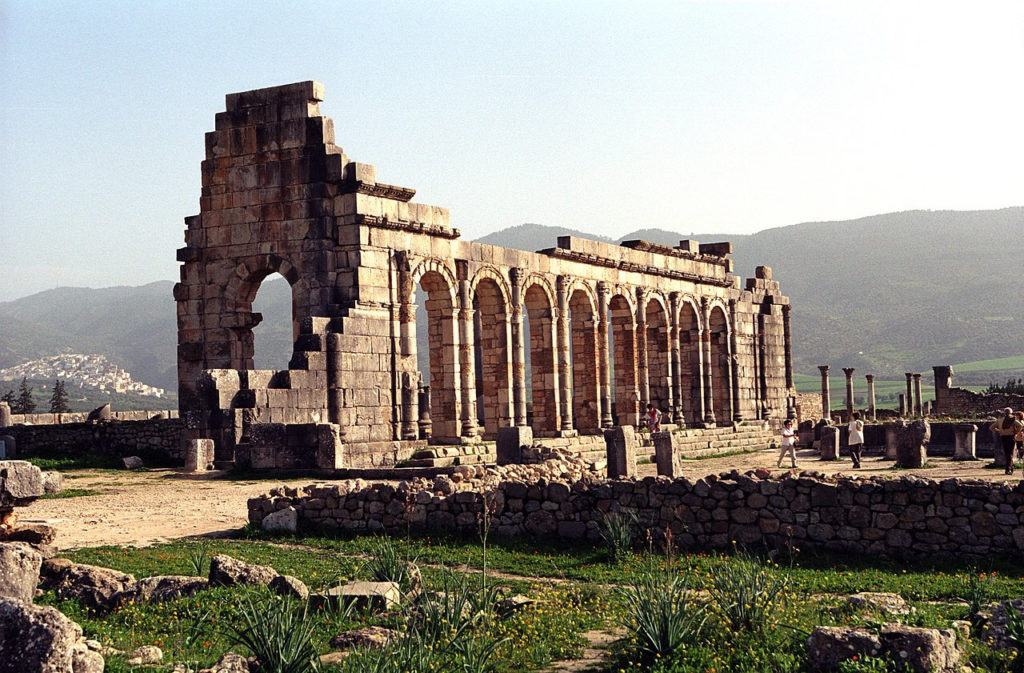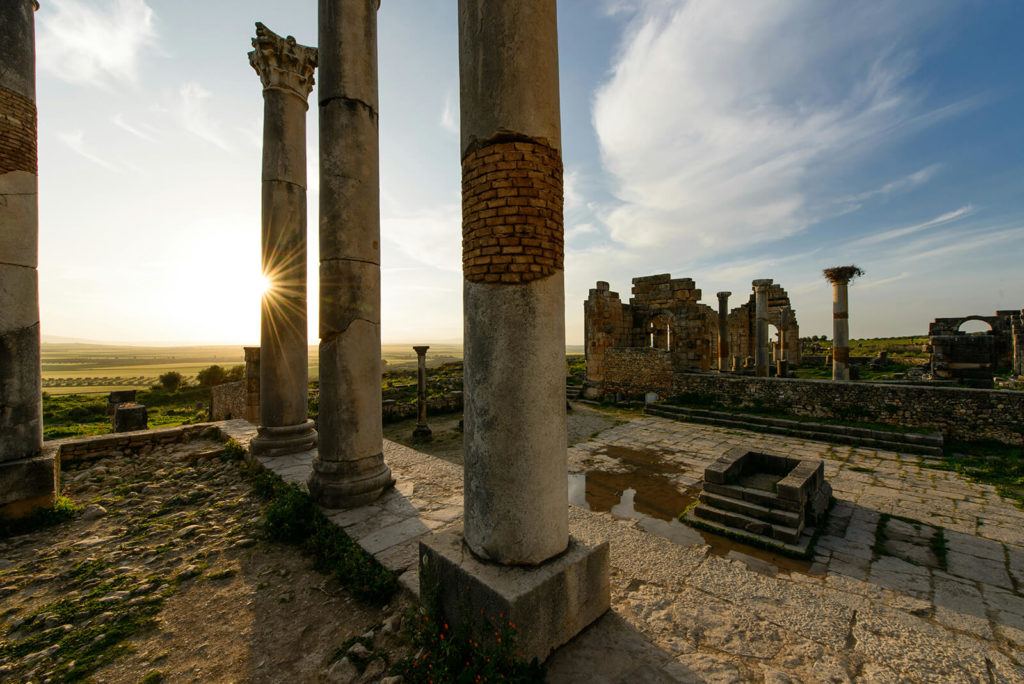Hidden among the gentle hills of Northern Morocco lies one of the country’s most important ancient sites: Volubilis. These well-preserved ruins tell the story of a thriving city that was once the economic and cultural center of the Roman province of Mauretania. In this article, you will discover everything about the history, major monuments, and practical tips for visiting this impressive UNESCO World Heritage Site.
Volubilis is located about 30 kilometers northwest of Meknès and was once a key trading city in the Roman Empire. Thanks to its convenient location in a fertile plain, it became a center for olive oil production and grain farming. Today, Volubilis is one of Morocco’s most significant archaeological sites and offers a unique glimpse into the Roman heritage of North Africa.
Contents
The history of Volubilis
Originally, the city was a Mauritanian settlement founded as early as the 3rd century BCE. With the Roman conquest in the 1st century CE, Volubilis entered its golden age. The city developed into an important trading hub, exporting goods throughout the Roman Empire.

Under Roman rule, the city flourished with the construction of grand structures like the Capitol, the Basilica, and the Triumphal Arch of Caracalla—monuments that still reflect the city’s former glory. But after the Romans withdrew in the 3rd century CE, Volubilis slowly declined as it faced increasing attacks by local Amazigh (Berber) tribes.
These raids eventually led to the city’s downfall. Over the following centuries, Volubilis endured various power struggles and destruction, which gradually diminished its importance. A devastating earthquake in 1755 severely damaged much of the site and led to its final abandonment.
During the early Islamic period, Volubilis found new life under the Idrisid dynasty. Idris I, a descendant of the Prophet Muhammad, established his power base here and founded the nearby holy city of Moulay Idriss. Under the Idrisids, Volubilis briefly returned to prominence as a political center before falling into obscurity once again.
Rediscovery of Volubilis
The ruins of Volubilis began attracting attention again in the 17th century when European travelers first described them in writing. Their accounts sparked curiosity about this long-forgotten Roman city. Archaeological excavations in the 19th and 20th centuries revealed many treasures, including the Capitol, Basilica, and the Arch of Caracalla, as well as intricate mosaics, remains of houses, and ancient olive presses.
Today, Volubilis is considered one of the best-preserved Roman sites in North Africa. Since being granted UNESCO World Heritage status in 1997, efforts to preserve this cultural treasure have intensified. Visitors can wander through the vast ruins and get a feel for what life was like in this once-famous Roman city, particularly known for its olive oil production.

Must-See monuments and highlights
A visit to Volubilis feels like stepping back in time. Most tours begin at the impressive Triumphal Arch of Caracalla, one of the site’s iconic landmarks. From there, paths lead to the Capitol, a temple dedicated to the Roman gods Jupiter, Juno, and Minerva. The Basilica, once used as a courthouse and administrative center, highlights the city’s role as a political hub.
One of the most fascinating features of Volubilis is its well-preserved mosaics. The House of Orpheus contains some of the most beautiful examples, depicting scenes from Greek mythology. The ancient olive presses also provide insight into the city’s economy and the importance of olive oil production. As you stroll through the ruins, it’s easy to imagine what life might have looked like in this Roman city..
Tips & information for visitors
Getting to Volubilis
Volubilis is easy to reach—most travelers begin their journey in nearby Meknès, just 30 kilometers away. You can take public transport, hire a taxi, or drive a rental car. Buses run from Meknès to the nearby town of Moulay Idriss, from where you can catch a short taxi ride to the ruins.
Guided tours
Organized tours from Fès or Rabat are also a great option. These usually include transportation and a guide, making them especially convenient if you prefer not to worry about the logistics yourself.
Opening hours, tickets & guided visits
Volubilis is open daily. Opening hours vary by season and generally are from 8:30 a.m. until sunset.
Admission for adults is 70 DH. You can book guided tours with certified guides on site or in advance to explore the Roman ruins in more detail.
How much time do you need in Volubilis?
Plan for about two to three hours to explore the ruins and mosaics at a relaxed pace. If you combine your trip with Moulay Idriss or Meknès, allow a full day, especially if you’re coming from Fès, which is around a 1.5-hour drive.
Conclusion on Volubilis
Volubilis is a stunning reminder of Morocco’s Roman past. Its well-preserved ruins, intricate mosaics, and grand monuments like the Arch of Caracalla offer a vivid glimpse into ancient life. With UNESCO protection, this cultural treasure is preserved for future generations.
The best time to visit is in the cooler morning or evening hours. Combine it with a stop in nearby Moulay Idriss or Meknès for a truly rewarding experience—and a memorable journey through the Roman history of North Africa.
FAQ
Absolutely. The site is well signposted, and information boards in multiple languages provide helpful historical context. Still, a guide can offer deeper insights and stories you might otherwise miss.
Yes! Right next to the site is the “La Corbeille Fleurie” café-restaurant, which serves drinks, mint tea, and light meals like sandwiches and tajines. For more dining options, head to Moulay Idriss.
Yes, it’s a family-friendly destination with plenty of space to explore. Just keep in mind that there’s little shade, so bring sun protection and plenty of water. Kids often enjoy discovering the mosaics and wandering through the ruins.
